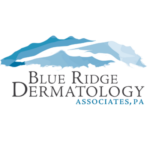Rosacea is a skin disease that causes redness, breakouts, swelling, and bumps. There are four different types of rosacea with slightly different symptoms. It is a common condition, and according to the National Rosacea Society, at least 16 million Americans are affected by rosacea.
If you’re suffering from the symptoms of rosacea, there are several types of treatments available. You should talk to your dermatologist about which rosacea treatment is right for you, but you can get started by learning a bit about them below.
Topical Medications
Topical treatments are often the first step in treating rosacea. Some treatments are available over-the-counter (OTC) or without a prescription, but you should always talk to your dermatologist before starting any new treatment. They may have recommendations for specific brands and can also tell you if something is safe for you to use, given your medical history.
- Azelaic acid: This is a popular and effective treatment for people with rosacea. It comes in gel, foam, and cream forms. People usually apply the treatment in the morning and in the evening. According to the American Academy of Dermatology, between 70% and 80% of patients have a noticeable reduction in symptoms.
- Sodium sulfacetamide and sulfur: These ingredients are often found in acne treatments, so they can be helpful in treating similar rosacea symptoms. While some of these treatments are OTC, you should consult your dermatologist before using them.
- Metronidazole: This is a topical rosacea treatment that has been used for decades. It is available as a gel or a cream and will reduce redness and breakouts. Metronidazole is sometimes prescribed with other medications or treatments for maximum effectiveness.
- Retinoid: This is a form of vitamin A/retinol that can be used to prevent flare-ups. However, it’s important that your rosacea is under control before using a retinoid because it can be irritating to the skin with uncontrolled rosacea.
Medication Taken Orally
While topical medications are often the first rosacea treatment doctors recommend, some oral medications may be prescribed as well.
- Antibiotics: Antibiotics can treat the redness and acne-like breakouts that are classic rosacea symptoms. Usually, when antibiotics are prescribed, the patient only takes them long enough to get their rosacea under control. Prolonged or frequent use of antibiotics may result in a condition called antibiotic resistance, where the medication is less effective at killing bacteria.
- Tetracycline: This is the most commonly prescribed oral antibiotic treatment for rosacea. It reduces acne-like breakouts and redness. Many patients see results from this medication within a month.
- Doxycycline: Doxycycline is also an antibiotic, but when it’s used to treat rosacea, it is given in such a low dose that it doesn’t have an antibiotic effect. Low-dose doxycycline can be given for a longer period than other antibiotics.
- Oral acne medications: Acne medications may be effective for treating rosacea due to the fact that both skin conditions share several symptoms. It’s important to learn about any possible risks associated with acne medications because some have negative side effects.
- Isotretinoin: This is a medication used to treat severe acne. This rosacea treatment is best for those who have acne-like breakouts. Isotretinoin is not right for people who are pregnant or trying to get pregnant, as it may be linked to birth defects.
Light and Laser Therapy
Light and laser therapies are available to treat the symptoms of rosacea. Most treatment cycles include one to five individual treatment sessions. To maintain the results, follow-up treatments are necessary.
You may need to talk to your dermatologist or esthetician about the cost of treatment before committing to it, as insurance does not cover it. As with any laser or light treatment, make sure you choose a board-certified professional to perform the service.
Lifestyle Changes
There are certain small lifestyle changes you can make that may improve rosacea symptoms. One of the most important things to make a habit of is protecting your skin from the sun. People with rosacea often have sun sensitivities, and you should pay attention to how much sun your skin gets anyway. Cover up, seek out shade, and always use broad-spectrum sunscreen with an SPF of 30 or higher.
Another thing that can be helpful in treating rosacea is learning what triggers your symptoms. Not everyone with rosacea will have the same triggers. Some people are triggered by stress, food, cold air, heat, or certain skincare products. Keep track of what you’re doing or using when you have a flare-up. Then limit your exposure to those triggers when possible.
You should also make sure to keep and attend any follow-up appointments with your dermatologist. If you are looking for a dermatologist, Blue Ridge Dermatology provides comprehensive medical and cosmetic dermatology care for patients in the Cary, NC, area. To get more information about rosacea treatments, call us at (919) 781-1050 to make an appointment.


